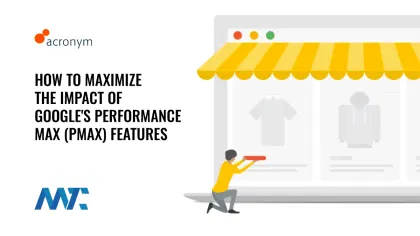
Google is rolling out several new methods to enhance and demonstrate the incremental value of Performance Max (PMax) campaigns. Google Performance Max is a campaign type that helps advertisers maximize their reach and meet customers across various channels, including YouTube, Search, and Discover. It allows advertisers to access new inventory, formats, and audiences. Key features of Performance Max campaigns include:
- Maximize your reach: Show up across all of Google’s ad inventory and formats, finding new customers wherever they’re searching or consuming content.
- Drive traffic and sales: Reach more converting customers across Google, increasing online, in-store, or omnichannel sales.
- Uncover insights and trends: Gain actionable insights to improve your campaigns’ performance and find new and unexpected audiences that match your goals.
Performance Max has helped businesses achieve significant growth in conversions, revenue, and return-on-ad-spend (ROAS) by optimizing for both online and in-store goals. These enhancements include improving performance on Search inventory, increasing return on investment by using more compelling video creative, measuring conversion uplift, and offering more detailed reporting.
By incorporating these updates, advertisers can steer their Performance Max campaigns in the proper direction and enhance their marketing objectives. For example, campaign-level brand exclusions will provide more control for advertisers by being able to prevent PMax campaigns from appearing in Search and Shopping inventory for specific branded queries. Additional reporting will give advertisers the ability to view conversions, conversion value, cost, and other metrics at the asset group level. Budget pacing insights will be available with current and forecasted conversion performance.
Meanwhile, with the new Page Feeds features, when marketers are using Final URL Expansion, they will be able to upload a feed of page URLs to identify them as important URLs to reference. When NOT using Final URL Expansion, matching will be restricted to just these URLs. The new simplified process for Video Creation within the actual setup and simplifying video workflows of PMax campaigns. This video creation tool was previously only available in the asset library.
PMax Campaign Types and automated technology are the future of advertising on Google.
Google Performance Max Limitations
Objections from advertisers and agencies have centered around lack of visibility and control, so it’s good to see Google offering new products which advance those capabilities. Video Creation appears to be available now, but there is no official word on the roll-out timing of the other features. In the meantime, there are some limitations brands need to consider:
- Campaign-level brand exclusions – While marketers have found a loophole for this in the past, it is recommended that advertisers use this feature to minimize serving competitive brand queries. Allow your branded traffic to flow to your Search campaigns and utilize PMax for non-branded queries, while the AI finds and serves users across the platforms it covers.
- Additional Reporting – Although optimization levers are limited, visibility into performance at the asset group level will help advertisers strategize and focus creative efforts on the inputs driving results. Marketers are hopeful this is the first step to more granular reporting to come. Budget forecasts will be useful to understand the PMax opportunity.
- Page Feeds – This will help advertisers as it allows more control over where traffic is directed on your sites. Some marketers may have already performed valuable on-site CRO and know which pages work best in driving traffic. The ability to restrict matching to specific pages will be helpful to advertisers who share a website across varying locations, etc..
- Video Creation – Due to the limitations of this feature marketers should focus on having well-designed and meaningful video content for users across all aspects of the conversion funnel.
While Google’s Performance Max campaigns still have room for improvement, leveraging the power of Google’s AI combined with specialized advertising expertise can accelerate that progress. The introduction of these fresh PMax campaign features will enable advertisers to make significant strides toward achieving their marketing goals effectively and efficiently.
Stay alert for the next round of updates and be prepared to move quickly to capitalize on them.
How To Create A Performance Max Campaign
- Select your main campaign objective and the conversion goals you want to drive performance towards.
- Choose Performance Max as your campaign type to access all Google Ads channels and inventory from a single campaign.
- Select a budget and bid strategy for your campaign, ensuring it aligns with your business objectives.
- Choose your campaign’s location and language settings, and adjust other settings like ad serving schedule, start and end dates, and tracking templates.
- Leave final URL expansion On for maximum coverage on relevant search queries.
- Create asset groups for your creative assets, including final URLs, images, logos, videos, text headlines, and descriptions, and calls to action.
- Use the Ad strength indicator to improve your assets and provide as many assets as possible.
- Input audience signals to guide automated targeting and ensure the most relevant ad is served to the most relevant audience.
- Add a variety of ad extensions for site links, callouts, calls, lead forms, and more.
- Review the campaign summary before publishing the campaign and resolving any errors.
- Give the campaign a few weeks before evaluating results, keeping an eye out for ad disapprovals and limited budgets.
- Monitor asset performance to improve your creative assets and make necessary adjustments at the account level for further customization.
Learn More About Performance Max Campaigns